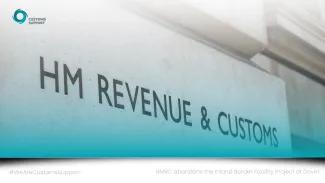HMRC have stated that the project – originally designed to ease pressure on Dover customs with the upcoming border checks from the EU and foodstuffs – is no longer required as other sites have the capacity with the reduced requirements. Although the decision to cancel the facility means that the 400 job vacancies are no longer available, HMRC has stated that £120 million will be saved by halting the project.
Inland border facilities were introduced to manage additional customs clearance processing after Brexit.
Although most sea and Ro/Ro terminals do have the capacity for customs to inspect goods that are coming into the UK, the volume of traffic from the EU increased the demand for these facilities – with some requiring additional sites to be built to support them.
Ports that have a high amount of EU imports on foodstuffs, like Dover, have needed the most help. The Animal and Plant Health Agency (APHA) have not historically needed the manpower there, as foodstuffs were in free circulation with the EU, so the planned changes to food imports by HMRC required new facilities to meet the new demand.
With the removal of the additional port health checks, the upcoming pressure on inland border facilities has been reduced for now – so this new site is no longer necessary.
What will the land be used for?
The Department for Transport bought the land with the intention to use it as a strategic asset near the border. With the cancellation of the inland border facility, the department will explore other options with HMRC to see how the land can be best utilised.
There are known issues with infrastructure around the Port of Dover and the A2, as well as HMRC’s move towards the Single Trade Window – which could still require additional customs checks and inland border facilities – to consider. The Department for Trade has stated that they will be consulting with local businesses, residents, and leaders to ensure that the land is used in a way that can benefit all.
Do you want to know more about inland border facilities?
The UK Government is moving towards the UK Single Trade Window – as part of the 2025 border strategy – which is being built with a streamlined, live-data process in mind, cutting queues and costs for traders without compromising compliance and security.
Although this can mean a simpler process for you – particularly if you benefit from Customs Support’s end-to-end customs clearance service – an inland border facility might still be required for physical inspections.
If you’d like to discuss migrating to a digital customs clearance service, need help with the Customs Declaration Service, or want to know how a new requirement for using an inland border facility could affect you, contact one of our team for more information














